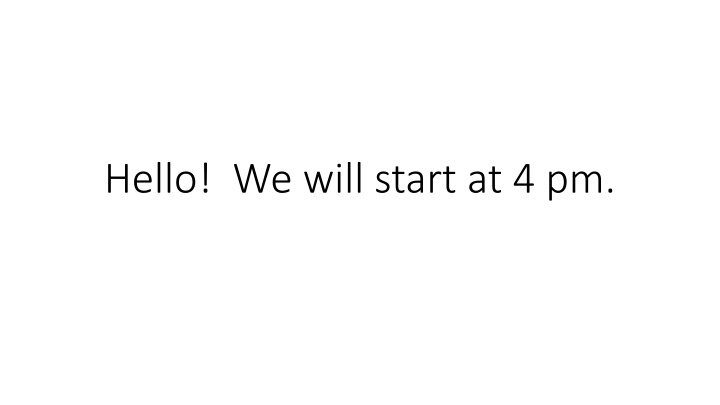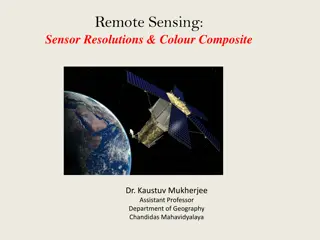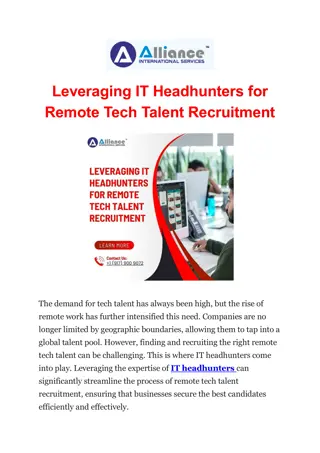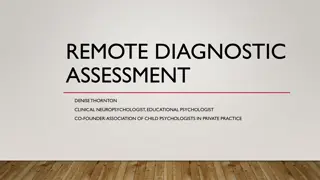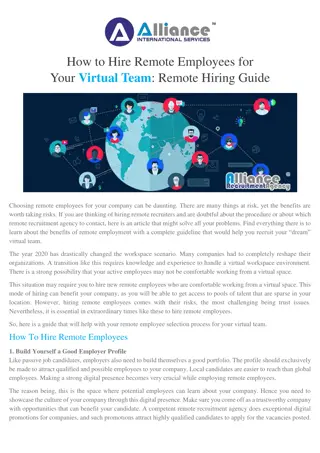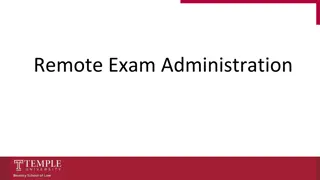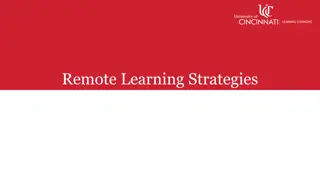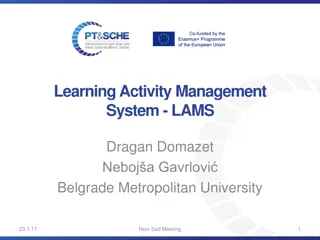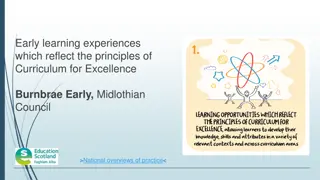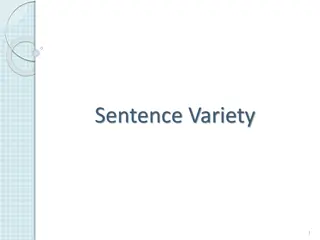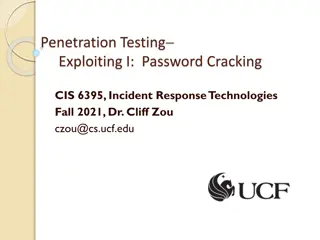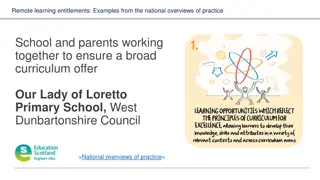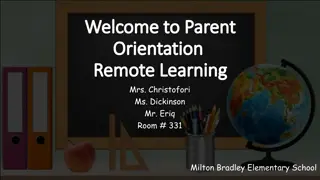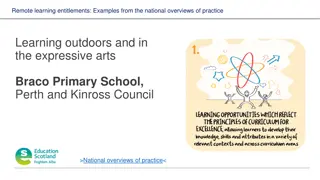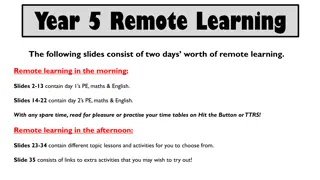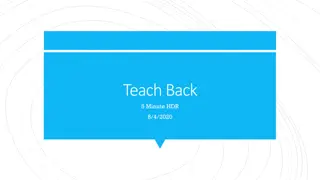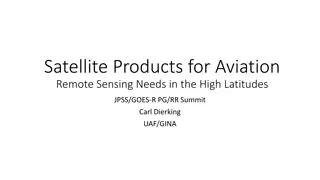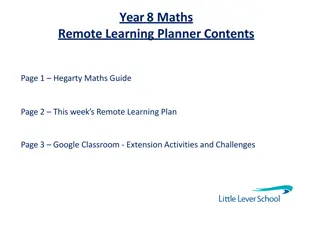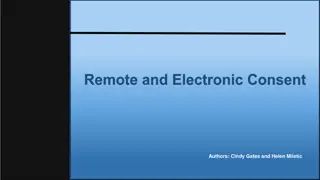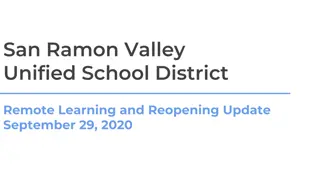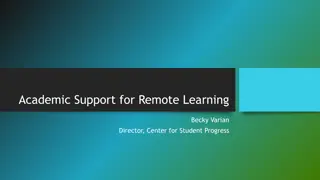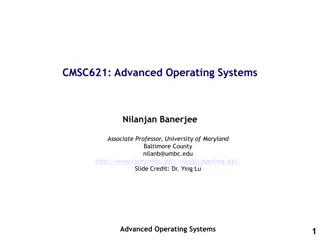Variety of Remote Learning Activities
Engage in a range of activities to promote active learning and enhance understanding of course materials. Explore different types of learning outcomes and frameworks for designing effective learning experiences in remote settings. Get inspired to brainstorm ideas, collaborate with others, and create a consistent and engaging learning environment. Discover methods for experiential learning, reflection, and information gathering to deepen learning outcomes. Tags: Remote learning, Active learning, Learning outcomes, Instructional design, Collaboration
Download Presentation

Please find below an Image/Link to download the presentation.
The content on the website is provided AS IS for your information and personal use only. It may not be sold, licensed, or shared on other websites without obtaining consent from the author.If you encounter any issues during the download, it is possible that the publisher has removed the file from their server.
You are allowed to download the files provided on this website for personal or commercial use, subject to the condition that they are used lawfully. All files are the property of their respective owners.
The content on the website is provided AS IS for your information and personal use only. It may not be sold, licensed, or shared on other websites without obtaining consent from the author.
E N D
Presentation Transcript
Variation of activities in remote courses Victoria Bhavsar, Cal Poly Pomona Faculty Center
A few ideas to start Expand your thinking about, and clarify, topic/module/lesson level learning outcomes Brainstorm challenge yourself to think of an unreasonable number of things Set a time limit on searching for ideas! Work with others teaching the same or similar courses. Recruit student ideas! Hit a sweet spot there needs to be consistency and rhythm as well
Types of learning outcomes
Holistic view of active learning
Activities that promote active learning Experiencing Reflecting Getting Information and Ideas (on what one is learning and how one is learning) Doing Observing Classroom discussions Term papers In-depth reflective dialogue and writing on the learning process Original data Original sources Real doing, in authentic settings Direct observation of phenomena Direct Secondary data and sources Lectures, textbooks Case studies Simulations Role-play Stories (can be accessed via film, literature, oral history) Indirect, Vicarious Students can record their reflections, and then, if they choose, share their reflections with others in writing, via TV, or online. Distance Learning (online courses, interactive video, correspondence courses) Course web site Internet Video lectures Printed materials Teacher can asign students to "directly experience"... Students can engage in indirect kinds of experience, at distant sites or online.
Two frameworks to consider activities Universal Design for Learning Quality Matters: Interaction of students with Their faculty Each other The content The real world
Wall of COOL: Stephanie Rothman Video thumbnail of Wall of COOL 2020: Stephanie Marin Rothman
Breakout rooms: Come up with 10 ideas. Interacting with faculty Interacting with content Interacting with each other Interacting with the real world
Some of my favorites Learning engagement log Critical incidents questionnaires Interviews of family & friends Critique other people s (experts) videos Testing claims with evidence Asking questions Fifty Questions Compare and contrast phenomena Experience a phenomenon
